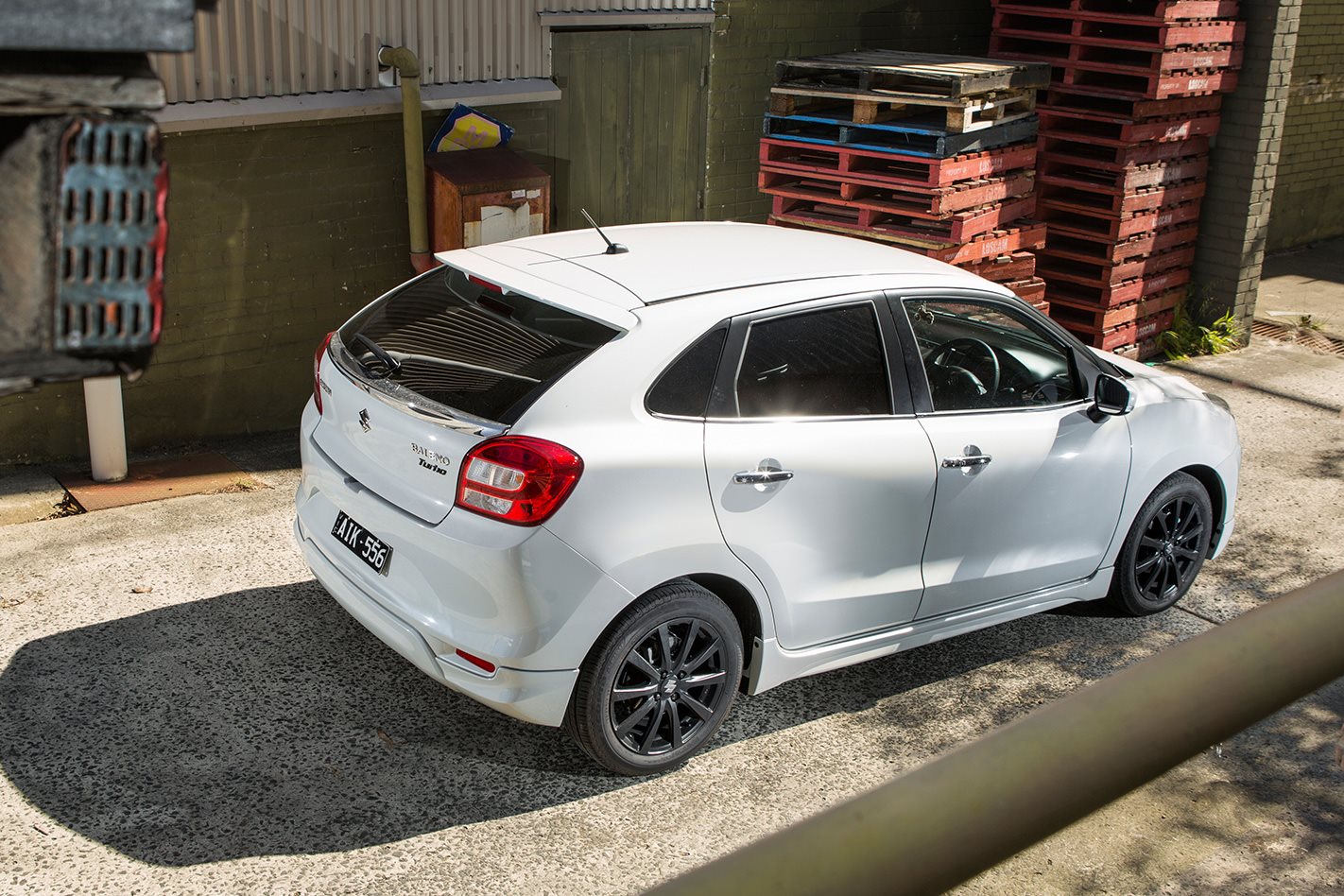
As a cash-strapped uni student my beloved first car (a faithful 1993 Toyota Corolla) had to be sold. But my aversion to any form of public transport meant I needed another means of getting around, and I sure as hell wasn’t about to go slip on the lycra. So I ended up cutting through traffic on a motorcycle. Starting full-time work might have meant rejoining the four-wheeled community, but the extreme cost of living in Sydney (or too much smashed avocado if one of Murdoch’s papers is to be believed) meant that didn’t happen – although I did purchase another motorbike…
Now that I feed my smashed-avo habit by writing about road cars (as opposed to motorsport), it’s only right and proper I have four wheels permanently placed in my garage.
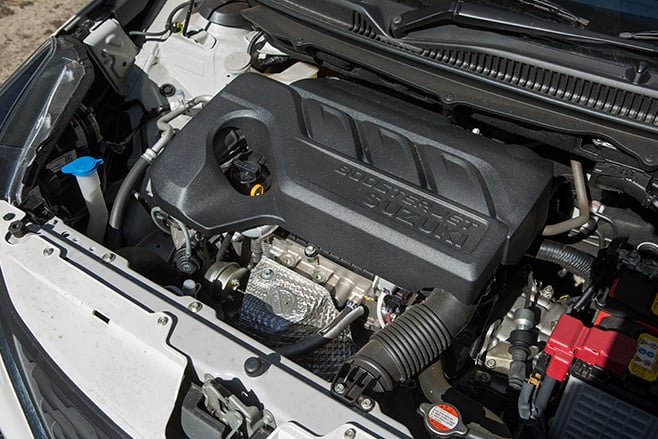
“I’ve found you a long-termer,” chirped Nathan Ponchard down the phone after a particularly long day in the office.
Brilliant! The reign of the week-long press vehicle was finally over, and I could build a proper relationship with a car.
“And it has a bodykit!”
Ha! Take that riding in Melbourne’s constant miserable rain.
“And a turbo!”
I could already see myself as the new king of the Oakleigh traffic-light grand prix.
“It’s a Suzuki Baleno…”
I think Ponch meant that final remark as a punchline after building up my hopes for a high-powered, tuner missile. But he read me wrong. I was, and remain, genuinely excited about what is now my little Suzuki Baleno.
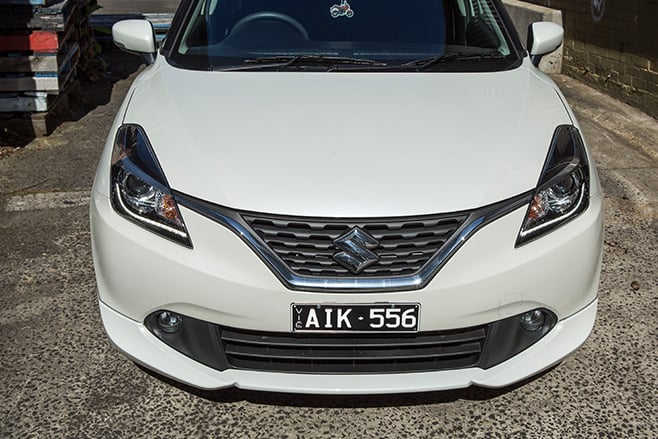
The white body over black rims is a classic look, and a winner with me. As for the bodykit, while some people say they find it a tad tacky, I adore it. Perhaps it’s because my favourite film is The Fast and the Furious (not everyone got to grow up with Bullit, okay?), but I think the lip and side skirts add flair without making the styling too aggressive.
I’ve had the keys in my hands for little more than a week, but the Baleno has already been affectionately nicknamed (Bailey) and there are some clear observations, such as an interior that has more plastic than a Hollywood surgery.
But funnily enough I’m still enjoying my time rolling in the Baleno. The infotainment system is intuitive and easy to operate, the seats are relatively comfortable (if a bit on the firm side, and the seating position could be lower) and the audio is above par for a car that retails from $21,990.
The 1.0-litre three-cylinder turbo is dwarfed in the engine bay, where it sits on plastic engine mounts. Eek! However, it shifts the plucky Baleno along nicely. It’s not thrust-mode acceleration, but neither would you call it lethargic. There’s very little lag from the turbo, though inputs through the accelerator pedal aren’t always instant, which is infuriating. I wouldn’t accept the same standard of response from the brakes, so why should I cop it from the throttle?
From my rather short work commute, and a few brave trips to the fearsome Chadstone Shopping Centre car park, Bailey the Baleno has impressed me as a fun city runabout, with serious potential. But will the doe-eyed affection last as our relationship develops? Here’s hoping.
Update #2
Humans are said to be creatures of habit, and I’m unashamedly a living embodiment of that statement. I will get up every morning at the same time, complete the same morning routine, which includes eating the same breakfast I have consumed since before I attended primary school, take the same route to work and park in the same car park. I could plot my daily routine on an Excel spreadsheet.
This monotony is broken only on the hallowed weekend when alarm clocks are outlawed, breakfast can be a lottery, and a plan for the day can be as simple and carefree as “let’s just see what we feel like”.
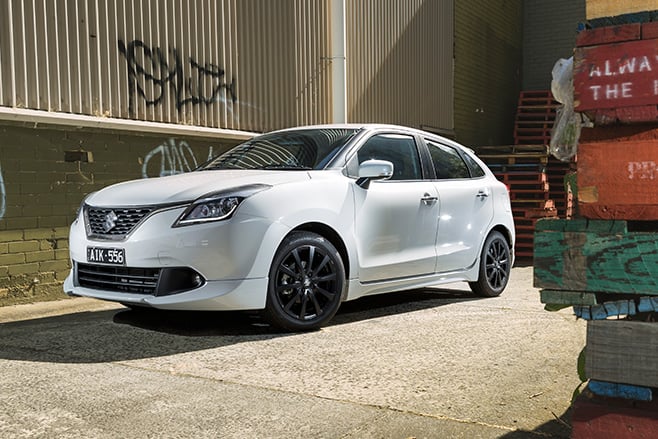
Repetition is handy when testing cars. Hitting the same pothole every day in different vehicles will tell you a lot about how different suspensions soak up bumps. But sometimes you just have to say “screw the beaten path” and do whatever you feel like.
It was time for the Suzuki Baleno to break free from the weekday commute and get out into the countryside. With the girlfriend in the passenger seat, favourite music playlist at the ready, fuel tank filled to the brim and snacks prepped, we headed off for a 600km drive via the Dandenongs. Aside from a rough list of roads I wanted to travel, there was no plan, and it was glorious. Both the Baleno and myself revelled in just seeing where each country road took us, doubling back on our own route to discover another new piece of fine twisting bitumen.
While I enjoyed the freedom, the Baleno took the curves in its stride. This turbo-triple-cylinder hatch makes a rather capable hill-climber, though after re-setting its trip computer, I noted its economy soared into the 10s in even lightly spirited driving.
The Baleno doesn’t wallow around like you might expect, instead holding its line admirably. And while the steering is electrically assisted – and not universally praised – I really rated its feedback and feel.

The biggest letdown of the entire day was the Suzuki’s seats. It wasn’t a lack of comfort – you could tour all day in the Baleno GLX just fine – but there is minimal lateral support, leaving you (and the missus) sliding all over the place through twisty mountain passes.
With the day wrapping to a close, in a moment of contemplation overlooking Bonnie Doon, my girlfriend couldn’t hold back a cliched quip: “How’s the serenity, darl?”
On a day like this, with a car as eager as the Baleno GLX, on roads as brilliant as these, with company like that? Almost as good as a well-priced pair of jousting sticks.
Siri, please…
When it comes to navigating my new city, I’m spoiled for choice in the Baleno. Satellite navigation comes standard, Apple CarPlay means Apple Maps is thrown in, or I can use Google Maps through Bluetooth or auxiliary audio with a phone app. You’d wouldn’t expect much difference between the three, but you’d be wrong. After much experimenting, I’ve abandoned the standard sat-nav and Apple Maps – visual aids aren’t much help if the suggested route is terrible – in favour of Google Maps, regardless of the fact it has audio guidance only.
Update #3
“HAIL Mary full of grace, please find me a parking space.” I’m not a religious bloke, but I’ll recite a small prayer to any deity that feels like listening if it helps me find a parking spot in the madness of going hunter-gatherer grocery shopping.
Thankfully, the Suzuki Baleno makes life amidst the madness that is a Westfield parking station a little easier. A while back I had attempted to run some errands in an Audi RS Q3 whose keys were thrown in my direction for the weekend. An SUV, yes, but with a 4410mm length, not exactly gargantuan. However, the Audi’s moon-sized 12-metre turning circle forced me to abandon the venture in sheer white-hot frustration before it had even begun.
Not so in the Suzuki. Its abbreviated length means it can carve up the carpark with ease. The Baleno’s sole weakness in the madhouse of the underground is its low-geared steering rack, which requires much wheel-twirling. But once you’re at full lock, the little Suzuki has a tight 9.8-metre turning circle. That’s identical to a Mazda 2 on 16-inch wheels.
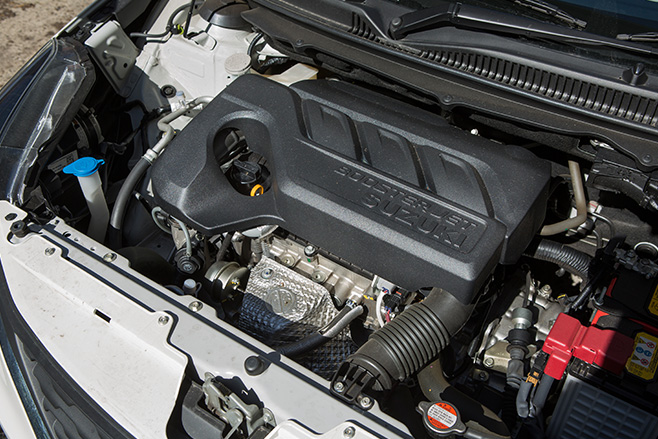
With a reversing camera as standard, parking the Baleno GLX is a no-brainer for even the most dent-prone driver.
The Baleno is an outsider in the light-car schoolyard, too pudgey to hang with the svelte superminis like the aforementioned Mazda 2, and not able to rub shoulders with the bigger, more gym-prone small cars like the Volkswagen Golf. It sits somewhere in the middle, and that pays off in the concrete jungle. Its 1745mm width meant I wasn’t having to play vertical limbo to squeeze out of the car to avoid smashing my door into the neighbouring vehicle.
Conversely, when transporting co-workers who took part in last month’s small-car megatest, it was remarked how much room was available in the rear-seats compared to some of the vehicles from that comparison.
With a girlfriend who lives interstate I am left to shop for one, which means I never come close to filling the Baleno’s 355-litre boot size. The rear space has great depth, but not a huge amount of length, so you will have to stack items in larger loads. You have to be careful which order you load your groceries unless you want a raw tomato sauce hand squeezed by an oversize Milo tin.
It hasn’t all been happy times with the Baleno. The throttle tip-in is frustrating,
as there’s a dead spot of travel before the by-wire set-up seems to make a connection with the engine and you’re jolted forward. Is this a fuel-saving measure? Whatever it is, it makes stop-start traffic a hassle.
Update #4
By Tony O’Kane
I’VE BEEN eyeing off Kirby’s long-termer for a while now. Admiring glances in the car park quickly turned to a full-blooded longing to get behind the wheel of his turbo-triple Suzuki Baleno and now, with him out of the state to visit his long-suffering girlfriend and family for a couple of weeks, I finally get my wish. Time to snatch the keys.
Full disclosure: I have a thing for Suzukis. No other manufacturer seems to inject its automotive offerings with as much charm as the little company from Hamamatsu, Japan. Being principally concerned with making motorcycles – perhaps the most emotionally engaging machines of all – probably helps Suzuki give its road cars a similar warmth, even something as prosaic as the grocery-getting Baleno.
You know what else helps? A thrummy three-cylinder engine with a turbo bolted to the side. Chest-thumping, V8-loving types may rail against the downsizing trend, but if the result is an engine as willing and lovely as the Baleno’s 1.0-litre turbo, then the future isn’t looking so grim after all.
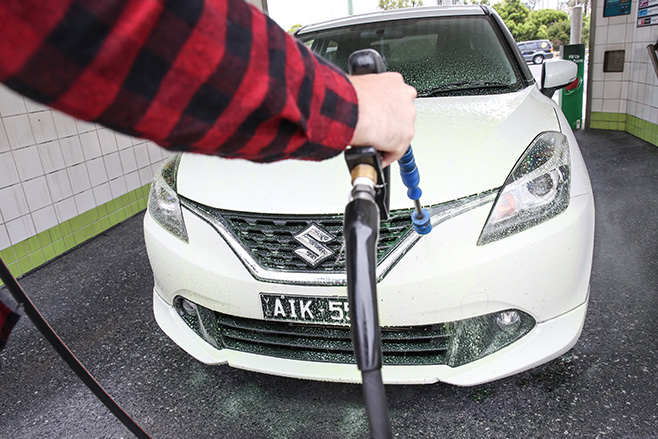
It is rev-happy, surprisingly torque-laden in the mid-range, and although it has ‘only’ 82kW and 160Nm to play with, those numbers are plenty considering the Baleno’s ballerina-esque 975kg kerb weight. The mantra “Less is More” must be rendered in wrought iron above the gate to Suzuki’s HQ.
There are some flaws, though. The Baleno’s glossy plastic dash looks like it belongs at the bottom of a Dimmeys bargain bin, and that chrome strip across the hatch is an acquired taste. However it’s the steering’s slackness around dead centre that’s a greater irritation, as is the six-speed auto’s habit of slipping its clutch bands after it upshifts into third. The latter would easily be remedied by selecting the manual transmission option … if it actually existed. I’ll let Kirby rant about that topic further, as that particular spec oversight really gets his temples throbbing. Stay tuned.
There’s also the Baleno’s surprisingly fussy ride over small-amplitude, high-frequency corrugations, which is strange as it’s actually fairly plush over bigger lumps. There was also one peculiar moment where the Baleno went into oversteer … while cruising uphill at 60km/h and driving in a straight line. Tram tracks appeared to be the cause, but it’s literally the only car I’ve ever driven that required an impromptu dab of oppo on a dead straight road.
Despite those niggles, the turbo Baleno got under my skin in a good way. Its chuckable chassis, boosty engine and Tardis-like interior are its most endearing facets, and though the overall package could still use some polish, the core of it is solid.
Farewell
IT’S A cliche as an automotive enthusiast and writer to bemoan the downfall of the manual gearbox, and cliches are lazy.
But screw that, because I have an axe to grind, and it requires a third pedal.
The Suzuki Baleno GLX Turbo has a great, rorty engine and is nicely balanced, but the lack of a manual gearbox leaves me severely disappointed. The arduously slow steering ratio and mandatory automatic transmission for this model left me wanting more from what I knew could be a tidy sporty package.
Don’t get me wrong, the automatic shifter mostly performed admirably. But with each drive I was left wondering if I would not be having more fun with an extra pedal. The Baleno isn’t an involving car to drive unless you are on the hunt for the limit, despite an engaging and characterful engine.
The frustrating thing about my gearbox gripe is that despite the number of you who agree with me, the commercial reality is our wishes are unlikely to ever be granted. Suzuki Australia General Manager Andrew Moore told me at the Suzuki Ignis launch early this year that manual gearboxes make up barely five percent of cars sold by the company, and if he had his way the number would be even less as the three-pedalled stock is hardest to move. Consumers just don’t want them.
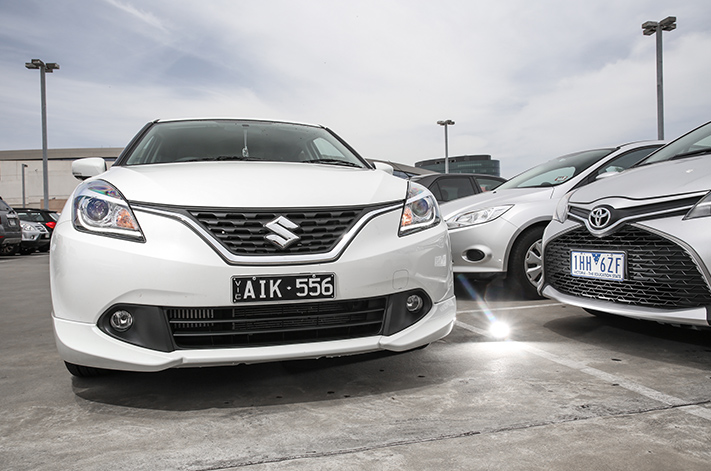
The Baleno’s styling did win me over. Without the bodykit the car is visually a bit beige, but the optional extra bits change the character completely. For young buyers wanting something other than a run-of-the mill Swift, the Baleno adds some extra eye candy (along with bigger boot space), and the optional body styling makes the car stand out from the crowd. If any of my friends were looking for a first car in this segment, but didn’t want one of the staple offerings like the Mazda 2 or Polo (being an individual matters to some), I’d gladly point them in the direction of the Baleno.
One point that must be addressed before the Baleno is farewelled is the issue of its crash rating. Euro NCAP gives the Baleno a three-star safety rating. It’s not Ford Mustang, two-star, headline-making shocking, but something worth investigating and explaining further. The lack of any active safety features like AEB is the main drag on the rating (a 25 percent ‘safety-assist’ result sticks out like a sore thumb), but doesn’t actually affect the way the Suzuki will protect you in the instance of an unavoidable metal-crunching crash. Adult occupant and child occupant results were 80 percent and 73 percent respectively – perfectly acceptable for this class – while for pedestrian safety the Baleno earned a 65 percent rating.
So viewed in a more real-world light, it’s hardly a deal-breaker, but is definitely something worth considering for the more safety-conscious consumer. I’ve been without the Baleno for a few weeks now, and must admit I’ve missed the way it eagerly tipped into corners and navigated tight inner-urban mazes with ease. The infotainment system was intuitive, if not entirely glitch-free (see breakout, above), and the rear seats proved adept at accommodating passengers without turning them into human origami.
But while the Baleno is a well-packaged offering, and a capable city runabout, it couldn’t quite deliver on the fun promised by its brilliant three-pot engine. In my perfect world, the GLX Turbo would have a brother, the Turbo Sport, and that would come with the rims and bodykit as standard, a warmer engine, quicker steering rack, and the option of a manual gearbox. A bloke can dream.




